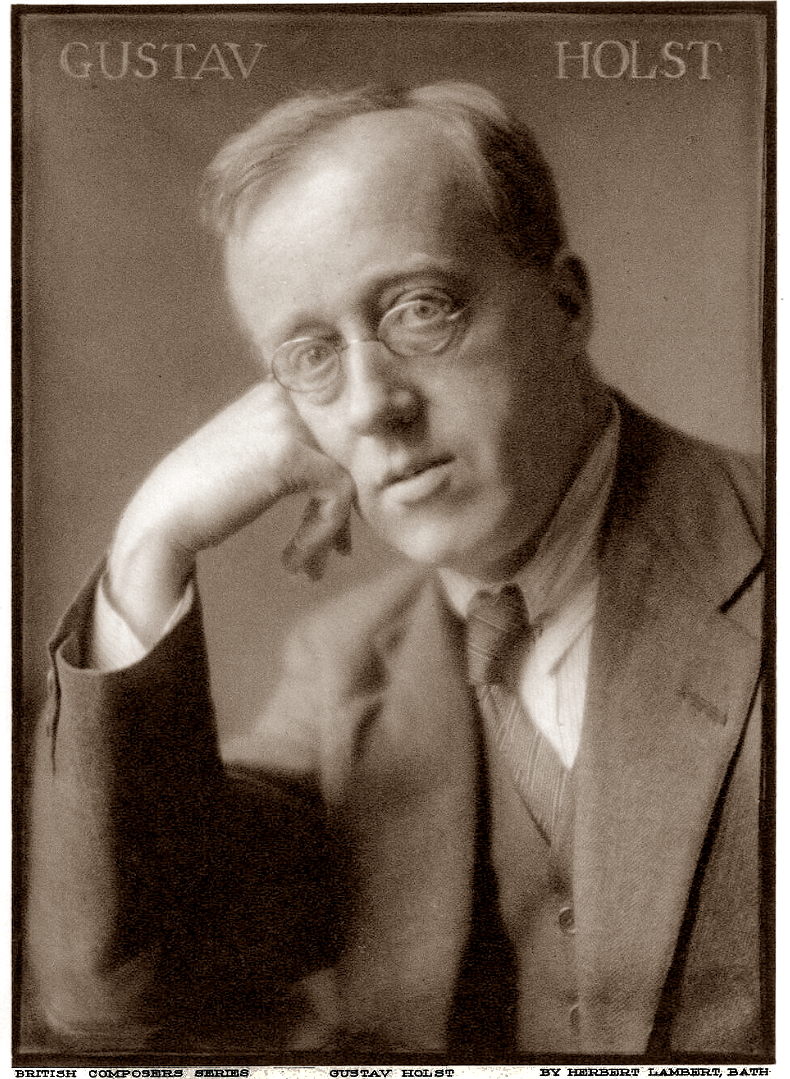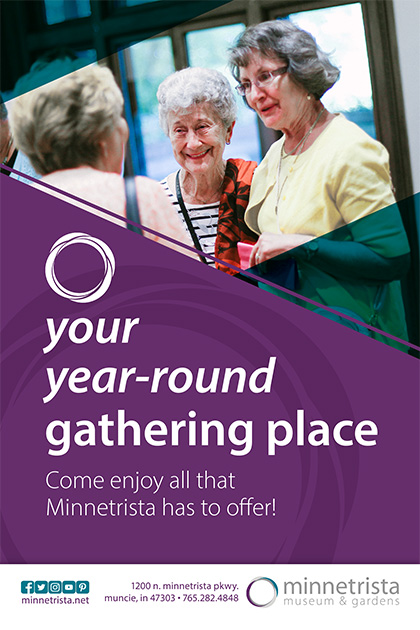
Orchestra Indiana's inaugural season begins with an out-of-this-world performance, under the direction of Maestro Matthew Kraemer. Pianist Kenny Broberg, 2017 Van Cliburn Competition silver medalist, displays the beauty of the Rachmaninoff’s Piano Concerto No. 2. The second half of the concert will feature Gustav Holst’s The Planets, complete with NASA space footage.
The Planets HD will be presented at Emens Auditorium in Muncie on Saturday, September 17 at 7:30 pm, and at Marion High School's Walton Center in Marion on Sunday, September 18 at 3:00 pm.
Would you like more background about the music you'll hear on this concert? Join us before the performance for a pre-concert lecture! Maestro Matthew Kraemer will provide an insightful and informative introduction to the pieces on the program.
MUNCIE
6:45 pm in the Hospitality Suite on the 2nd Floor of Emens Auditorium.
MARION
2:15 pm in the lobby of the Marion High School Walton Center.



Transportation Partner:

The Planets HD
In memory of Paul Everett, MSO Principal Trumpet 1979-2013
Matthew Kraemer, conductor
Kenny Broberg, piano
Kenny Broberg appears as the winner of the 2021 American Pianists Awards.
Piano Concerto No. 2 in C minor, Op. 18 — Sergei Rachmaninoff
I. Moderato
II. Adagio sostenuto
III. Allegro scherzando
Kenny Broberg, piano
Intermission
The Planets, Op. 32 — Gustav Holst
I. Mars, the Bringer of War
II. Venus, the Bringer of Peace
III. Mercury, the Winged Messenger
IV. Jupiter, the Bringer of Jollity
V. Saturn, the Bringer of Old Age
VI. Uranus, the Magician
VII. Neptune, the Mystic**
**with members of Ball State Concert Choir, under the direction of Dr. Kerry Glann
Sergei Rachmaninoff (1873-1943) – Concerto No. 2 in C minor for Piano and Orchestra, Opus 18

Sergei Rachmaninoff was a Russian composer and conductor as well as a remarkable pianist. Although he lived well into the 20th century, his musical style remained steadfastly in the 19th century style of Romanticism. His music is imbued with influences from his predecessors in Russian Romanticism, like Tchaikovsky and Rimsky-Korsakov, but he also developed his own distinctive musical style, which Geoffrey Norris describes as “a pronounced lyrical quality, expressive breadth, structural ingenuity and a palette of rich, distinctive orchestral colours.” Rachmaninoff left Russia in 1917 during the Bolshevik Revolution, ultimately settling in the United States for the remainder of his life. He died in 1943 at his home in Beverly Hills, California.
In 1897, Rachmaninoff’s First Symphony had a disastrous premiere, which sent the composer spiraling into a period of acute writer’s block. Several years later, he sought the help of Dr. Nicolai Dahl, a Russian physician who specialized in hypnotherapy. Dr. Dahl worked with Rachmaninoff to get over his writer’s block and to improve his general wellbeing. Rachmaninoff began composing his Second Piano Concerto in 1900, and completed it in 1901, with a premiere performance that year in Moscow. The composer himself took the stage as the piano soloist. Evidently, Dahl’s techniques were successful, and Rachmaninoff dedicated the concerto to him. The Second Piano Concerto has gone on to become perhaps Rachmaninoff’s best-loved work.
Described by Michael Steinberg as having “…a sense of effortlessness in its unfolding…” the Second Piano Concerto is divided into three movements and lasts a little over 30 minutes in total. The first movement, taken at a Moderato tempo, opens with a series of chords played by the piano, and through much of the movement the piano serves as an accompanist to the orchestra just as much as a soloist. The second movement has a slow, Adagio sostenuto tempo, and again opens with a series of piano chords. The concerto comes to a close with a fast tempo third movement, Allegro scherzando, which has an orchestral introduction and concludes triumphantly in C major.
© James Thompson, 2022
Gustav Holst (1874-1934) – The Planets, Op. 32

A British composer with some German ancestry, hence his rather Germanic-sounding name, Gustav Holst grew up in the town of Cheltenham in the west of England, where he learned to play piano, violin, and his primary instrument, the trombone. He studied composition at the Royal College of Music in London, followed by a career as a teacher at several different girls’ schools, including St. Paul’s Girls’ School. He found time to compose in addition to his teaching responsibilities, and he developed a unique musical style that did not seem overly influenced by any one particular composer. An example of his unusual style is that his fascination with Hindu philosophy led him to compose operas based on Sanskrit mythology and write settings of hymns from the Rig Veda.
Holst’s The Planets also exemplifies his unique musical voice, and the enduring popularity of this piece has come to overshadow everything else that Holst accomplished. There are no real precedents for this work: a multi-movement composition for a large orchestra with the celestial bodies as its inspiration. Composed between 1914 and 1916, The Planets was not premiered as a complete work until 1920 in London. There are seven movements, not nine, because Holst did not include Earth, and the ninth planet, Pluto, was not discovered until 1930. However, in 2000, the composer Colin Matthews wrote an additional “Pluto” movement which could supplement Holst’s work. The Planets demands exceptionally large performing forces, including several instruments rarely heard in an orchestra: the alto flute, the bass oboe, and the tenor tuba (euphonium). On the last movement, the orchestra is joined by a women’s chorus who sing from offstage.
Interestingly, Holst did not intend for this piece to be descriptive of the physical planets, nor even the Roman deities of the same names. Rather, Holst was influenced by astrology. He described The Planets this way:
“These pieces were suggested by the astrological significance of the planets; there is no programme music, neither have they any connection with the deities of classical mythology bearing the same names. If any guide to the music is required the subtitle to each piece will be found sufficient, especially if it be used in the broad sense. For instance, Jupiter brings jollity in the ordinary sense, and also the more ceremonial type of rejoicing associated with religions or national festivities. Saturn brings not only physical decay, but also a vision of fulfillment. Mercury is the symbol of mind.”
The planet Mars has long been associated with war, and Holst titles the first movement of The Planets: “Mars, the Bringer of War.” It is tempting to assume that he must have composed it as a reaction to the World War I, but in fact he completed this movement before the outbreak of the war in 1914, and so this movement is a foreshadowing of war, not a response. This movement is widely recognized today for its relentless marching rhythm in 5/4 time. The brass section is the dominant force in “Mars, the Bringer of War.” Listen for the tenor tuba (euphonium) solo in the middle of the movement.
After the harsh dissonance and relentless fury of “Mars,” the second movement, “Venus, the Bringer of Peace,” provides a tranquil interlude for the listener. The lush orchestrations in “Venus” highlight beautiful, languid melodies in the flutes, violins, and horn, supported by the glistening sounds of the harp and celesta.
The next movement is “Mercury, the Winged Messenger.” In Roman mythology, Mercury was the god of merchants, who sported winged sandals. In astrology, Mercury is “the thinker.” In Holst’s interpretation, “Mercury” is a fast-paced yet delicate scherzo, which flits about with abrupt, unpredictable changes in rhythm and harmony.
“Jupiter, the Bringer of Jollity” is the undeniable centerpiece of The Planets, an ecstatic celebration of sorts. In astrology, Jupiter is a symbol of many qualities - enthusiasm, knowledge, fortune, and opportunity. After a thrilling opening, “Jupiter” gives way a slower tune which recalls the simplicity of an English folksong. This melody becomes noble as it is later played in unison by the full orchestra.
After the exuberance of “Jupiter,” the piece slows down with “Saturn, the Bringer of Old Age.” In astrology, Saturn represents “man’s time on earth, his ambition, his strategic delay, his wisdom toward fulfillment, his disappointments and frustrations.” Dominated by the sound of flutes and harps, “Saturn” is at the same time serene and urgent. The orchestra suggests the tolling of bells and ticking of clocks, evoking the passage of time. “Saturn” was Holst’s personal favorite movement of the piece. Listen for the haunting bass oboe solo near the beginning.
While the previous planets had long been known, Uranus was only discovered in 1781. In astrology, “Uranus rules invention, innovation, and astrology itself.” “Uranus, the Magician” is an ungainly and menacing dance, which grows gradually more and more wild (not unlike Dukas’s Sorcerer’s Apprentice [think Mickey Mouse in Disney’s Fantasia]).
When Holst wrote The Planets, Neptune was the “newest” planet, having been discovered as recently as 1846. According to Michael Steinberg, “In astrology, Neptune means confusion and mystic rapport with other worlds…to Holst it speaks of distance, mystery, unanswerable questions.” Listen for the slow tempo, irregular rhythms, and gentle harmonic dissonances that pervade “Neptune, the Mystic.” The iridescent sounds of flutes, harp, and celesta set the tone, and then seemingly out of nowhere, the voices of an invisible chorus of women are heard. The technique of having a chorus sing from out of sight, offstage, was something that Holst had already utilized in one of his Sanskrit-inspired operas, Sāvitri. Unseen, haunting, and wordless, the chorus gradually dissolves into nothingness at the end of the piece. The listener feels like they have vanished into outer space.
© James Thompson, 2022







